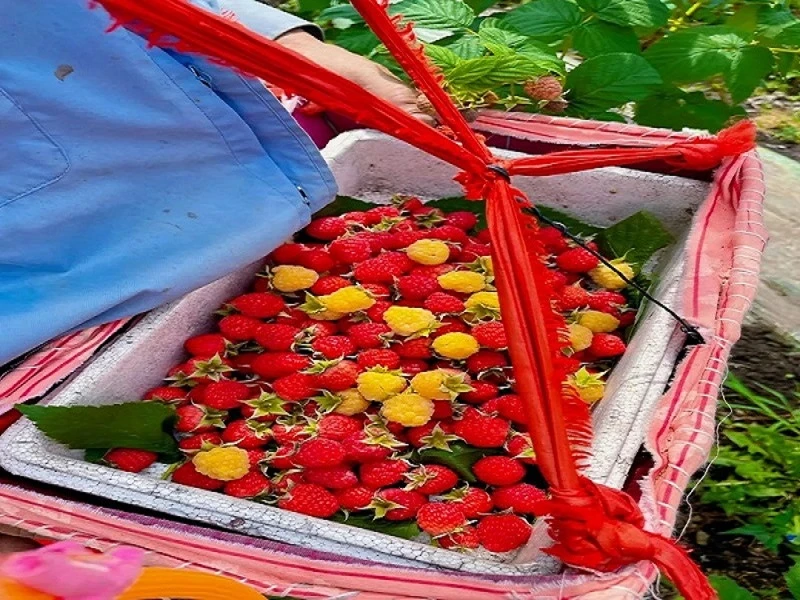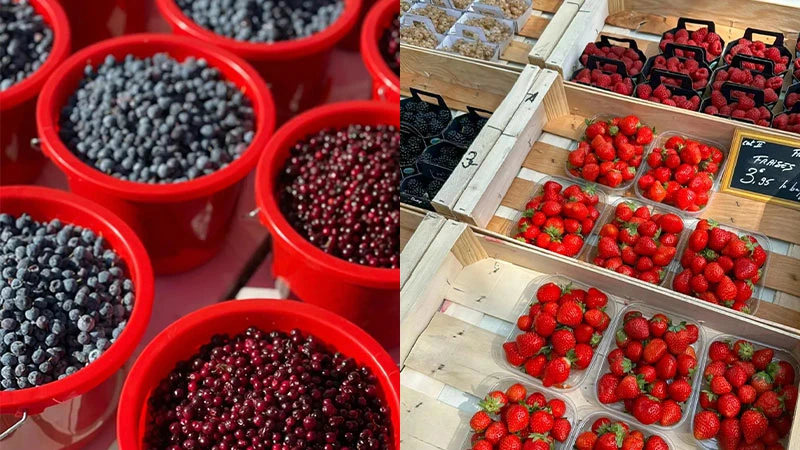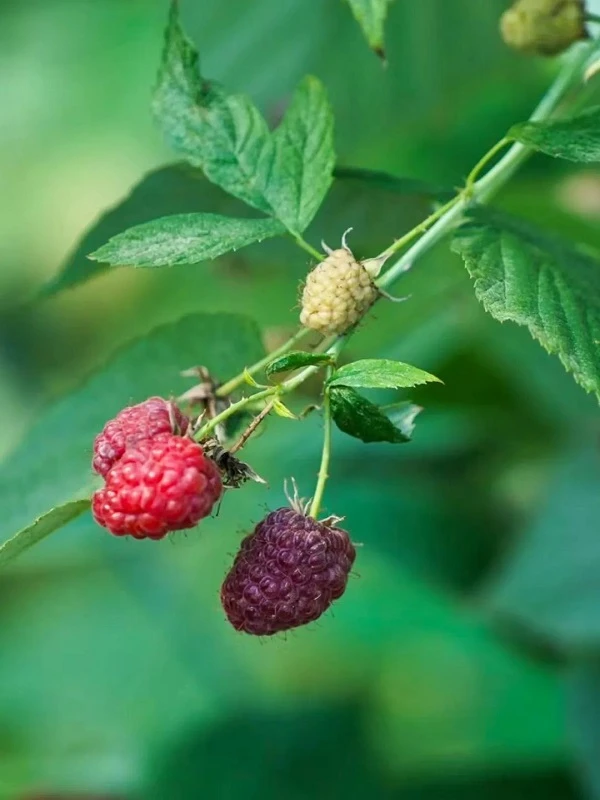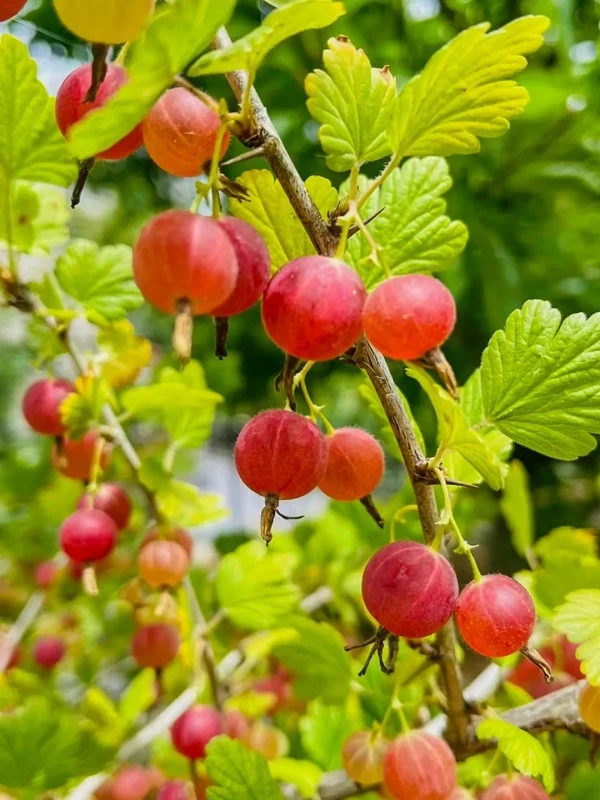While on a recent business trip to France, a friend of mine stumbled upon a fascinating discovery: the northern Chinese city of Qiqihar and Paris share a similar latitude. What intrigued her even more was seeing the streets of Paris lined with vibrant, colorful berries that looked exactly like the ones she grew up with in her family garden back in northeast China.
In the photo she sent me, she stood in front of a fruit stall, surrounded by red, blue, and pink berries, her face lit with excitement and nostalgia. I instantly recognized the familiar varieties: raspberries, blueberries, and gooseberries. I joked, "You've traveled halfway across the world, but it looks like you're still in our old Northeast!"
Northeast China, or "Dongbei," isn't often associated with berries, yet summer in this region is full of these juicy fruits. In local markets, you'll find raspberries, blueberries, and gooseberries, along with native fruits like watermelon, honeydew, and plums. However, for the local adults who grew up in Dongbei, these berries evoke memories of childhood rather than modern-day indulgences. For many, they are reminiscent of a time long past when these fruits were more than just food—they were treasures to be discovered.

Raspberries: Hidden Treasure to A Child
Among all the berries, raspberries, or as we called them "tuopeng'er (托蓬儿)" in our local dialect, hold a special place in the hearts of those who grew up in the Northeast. Raspberries were often found in the most unexpected places: behind old houses, near abandoned lots, or hidden in corners surrounded by wild herbs and plants.
In those early years, they were like a hidden treasure for children. Adults would casually mention finding a raspberry bush on their way to work, and this small piece of news would cause an immediate stir at the dinner table. Children would quickly finish their meals and race to the location, eager to be the first to pick the tiny red jewels hanging from the branches.
At first, the berries were often too sour to enjoy, picked when they were still transitioning from white to red. It was only after a few lessons in patience—waiting until the berries turned a deep, juicy red and separated easily from the stem—that the children could experience the sweet burst of flavor that raspberries offered. Though the sweetness was faint compared to other fruits, raspberries became a symbol of friendship and shared adventures. The thrill of discovering a new raspberry bush was often shared in whispers between friends, leading to secret berry-picking excursions after school. Over time, the backyard raspberry bushes united groups of children, creating memories of berry-picking races and the occasional playful argument over who had found the ripest fruit.
Blueberries: Wild Treasure and Cultivated Luxury
Blueberries, or "dushi (嘟柿)," as we called them back then, also held a place in the hearts of Dongbei children. Unlike raspberries, blueberries were elusive, hiding in low shrubs scattered across the northern plains. Gathering them was a task reserved for those with a keen eye and a love for adventure, often requiring foragers to walk long distances and carefully examine the small bushes.
Blueberries, however, were not for the faint-hearted. Their tartness was sharp and unrefined, a wild taste that only a few brave souls could tolerate straight off the bush. For most, the berries were collected in baskets and taken home to be sweetened with generous amounts of sugar. The result was a delicious after-school treat—blueberries marinated in their own vibrant purple juice. The berries were also made into jams or, on special occasions, into a sweet and tangy drink.
Back then, they were a seasonal delight, only available once a year and enjoyed by those who were lucky enough to gather them. Their delicate nature and short shelf life meant they rarely made it to market stalls, and no one could have predicted the rise of the blueberry empire that would follow.
Today, cultivated blueberries have become a staple in supermarkets worldwide, no longer the small, wild treasures we once knew. With their larger size, sweeter taste, and mass availability, they've become a global favorite. The once humble blueberry has transformed into a symbol of luxury, appearing in everything from health drinks to gourmet desserts. Yet, for those of us who remember the wild "dushi," the taste of cultivated blueberries can feel strangely unfamiliar—sweet, but missing the wild complexity we once cherished.
Gooseberries: The Prickly Jewels of Summer
Gooseberries, locally known as "denglong guo (灯笼果)," were another childhood favorite, though perhaps the most challenging to enjoy. Their bright green or red berries, covered in a fine layer of fuzz, were tart and often required a bit of bravery to eat. These berries, too, were often collected during foraging trips with family, their sharp flavor a reminder of the rugged, untamed land they grew in.
As children, we were introduced to gooseberries by the adults in our lives, who would return from trips to the mountains with handfuls of the fruit. The green ones were crisp and sour, while the black ones were softer, their sweet juice providing a brief respite from their otherwise tart nature.
In time, families began planting gooseberry bushes in their gardens, adding them to the mix of raspberries and blueberries. Every summer, children would eagerly await the ripening of the berries, filling their pockets with the tiny fruits and proudly sharing them with friends. The satisfaction of picking your own gooseberries and the playful competition to see who could eat the sourest berry were simple pleasures that defined the summer months.
Today, they are still a rare treat, though their value has risen as their wild counterparts become harder to find. Their prickly bushes, once a common sight in backyards, have become a nostalgic memory for many, a reminder of a simpler time when summer meant the freedom to explore and the joy of discovering nature's hidden treasures.



